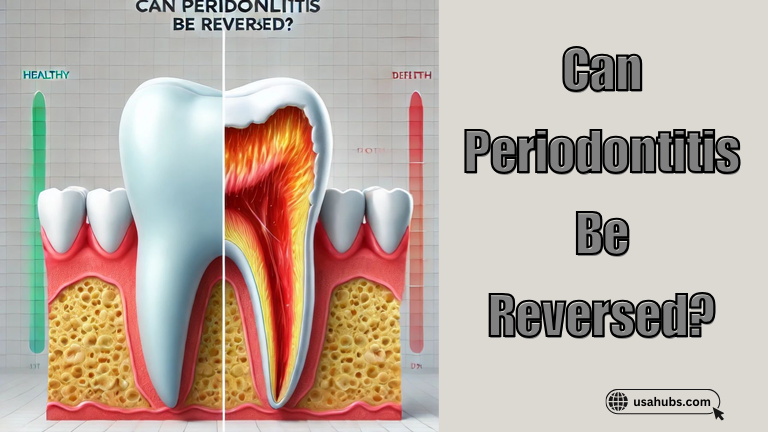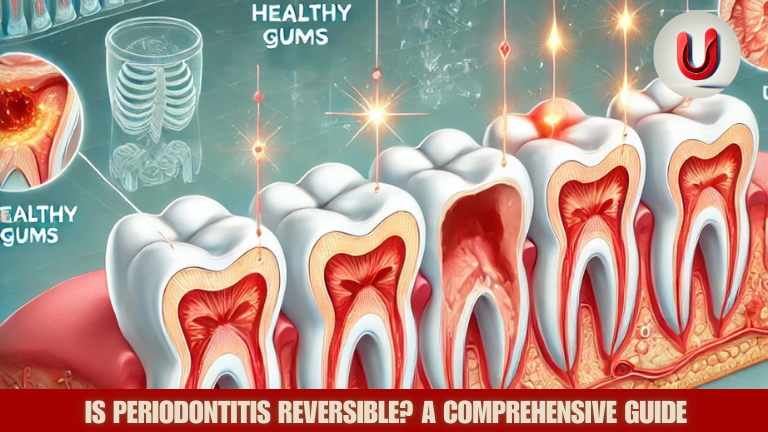Periodontitis (also known as gum disease) is a common oral health problem that affects millions of people worldwide. This progressive condition begins as gingivitis, or gum inflammation, and if untreated can cause irreversible damage. This comprehensive guide will cover a wide range of topics, including whether periodontitis can be reversed, the treatment options available, prevention tips and frequently asked question to give you a thorough understanding.
What is Periodontitis?
Periodontitis, a serious gum infection, is caused by bacteria that accumulate in plaque and tartar. Gingivitis is the first stage, when gums are red, swollen and prone to bleeding. Gingivitis can progress to periodontitis if it isn’t treated. The gums will pull away from teeth and form pockets which harbor harmful bacteria. This leads to tooth and bone loss over time.
Periodontitis symptoms
- Gums bleeding when brushing or flossing.
- Halitosis (persistent bad breath)
- The teeth will appear longer due to receding gums.
- Teeth that are loose or moving.
- The pain that occurs when chewing.
- Between teeth and gums, put a piece of pus.
Periodontitis: Causes and Treatment
- Plaque buildup is caused by poor oral hygiene.
- Smoking or tobacco usage.
- Genetics (family history)
- Diabetes or heart disease are underlying health conditions.
- Hormonal changes, such as pregnancy or menopause.
- Stress and poor nutrition are linked to chronic stress.
Can Periodontitis Be Reversed?

Reversibility of periodontitis is dependent on the stage at which the disease has reached.
Gingivitis – Reversible stage
The early stage of gum diseases, gingivitis is completely reversible through proper oral hygiene. There is no damage to the bone or gums at this stage.
Intractable Stage: Periodontitis
When gum disease becomes periodontitis the damage is permanent. Professional treatment can manage and control its progression. Although bone and tissue that has been lost cannot be naturally replaced, certain procedures are available to restore function and appearance.
What is the treatment for Periodontitis?
Non-Surgical Treatments
- Deep Cleaning (Scaling and Root Planing): This is a deep cleaning that involves removing plaque, tartar and other deposits from beneath the gumline. The root surfaces are then smoothed to encourage the gums to reattach.
- Antibiotics Localized and systemic antibiotics can be used to eliminate bacteria that cause infection.
- Laser Treatment: lasers can reduce pocket depth, and kill bacteria with minimum discomfort.
Surgery Treatments
- Pocket Reduction (Flap Surgery): The procedure involves lifting the gingiva to remove bacteria and tartar from deep pockets, and then suturing them back into place.
- The Bone Grafting Method: A bone graft can be used to repair and regenerate the lost bone due to periodontitis.
- Soft Tissue grafts: The gum line is strengthened by using tissue from another part.
- Guided tissue regeneration: The membrane used to promote bone and tissue growth is biocompatible.
Restorative Options
- Dental implants: Used for replacing teeth that have been lost to periodontitis.
- Crown lengthening: Reshapes the bone and gum for both functional and aesthetic reasons.
Prevention of Periodontitis
Periodontitis can be prevented by taking preventive measures. Here are some essential measures to prevent periodontitis:
- Daily Oral Care:
- Use fluoride toothpaste to brush twice daily.
- Remove plaque from between your teeth by flossing daily.
- Use antimicrobial mouthwash.
- Regular Dental Visits:
- Plan cleanings and inspections every six-months.
- Early detection of gingivitis prevents progression to periodontitis.
- Healthy lifestyle choices:
- Smoking is a major risk factor.
- Keep a healthy diet, rich in calcium and vitamin C.
- Managing Conditions Underlying:
- Control diabetes and systemic health problems that can worsen gum disease.
What is the impact of periodontitis on overall health?
Periodontitis can affect the whole body. Gum disease has been linked to:
- Heart Disease Periodontitis inflammation can lead to arterial plaque accumulation.
- Diabetes Gum diseases make blood sugar levels more difficult to control
- Complications of pregnancy: Increases risk of low birthweight and premature birth.
- Respiratory infections: Bacteria in the mouth can cause infection by aspirating into the lungs.
Also Check: Is Shein Closing in 2024? Everything You Should Know
FAQs
What are the early signs of periodontitis?
Bleeding gums, redness and swelling are early signs, as is persistent bad breath. Early treatment of these symptoms can help prevent irreversible damage.
Home remedies for gum disease
Home remedies such as saltwater rinses or oil pulling may help to reduce symptoms but they do not replace professional treatment.
How long does it usually take to cure periodontitis?
The duration of treatment depends on severity. Initial treatments such as scaling and root planning may take several weeks while surgical procedures can require months to recover.
Does laser treatment work for gum disease?
Laser therapy can be effective at reducing pocket depth and bacteria. It also promotes better gum health.
Is tooth loss always the result of periodontitis?
Not necessarily. Tooth loss is often preventable with timely treatment and good management.
Can diet impact gum health?
Absolutely. The consumption of antioxidants, vitamins and minerals will improve the overall health and strength of your gum tissue.
Conclusion
Early intervention and good care can help manage this serious condition. Although advanced stages cannot be reversed, there are treatments available to stop progression, repair the damage and restore oral hygiene. You can protect your gums by maintaining good oral health and visiting a professional regularly.




